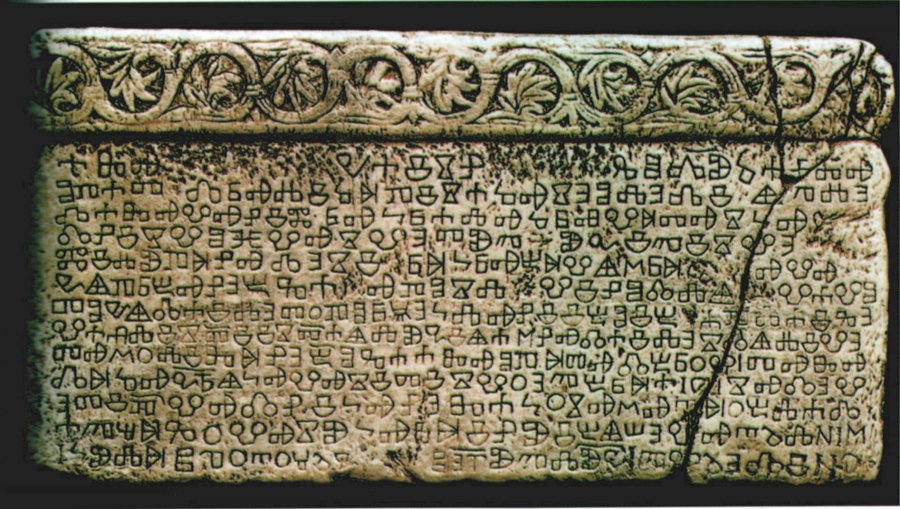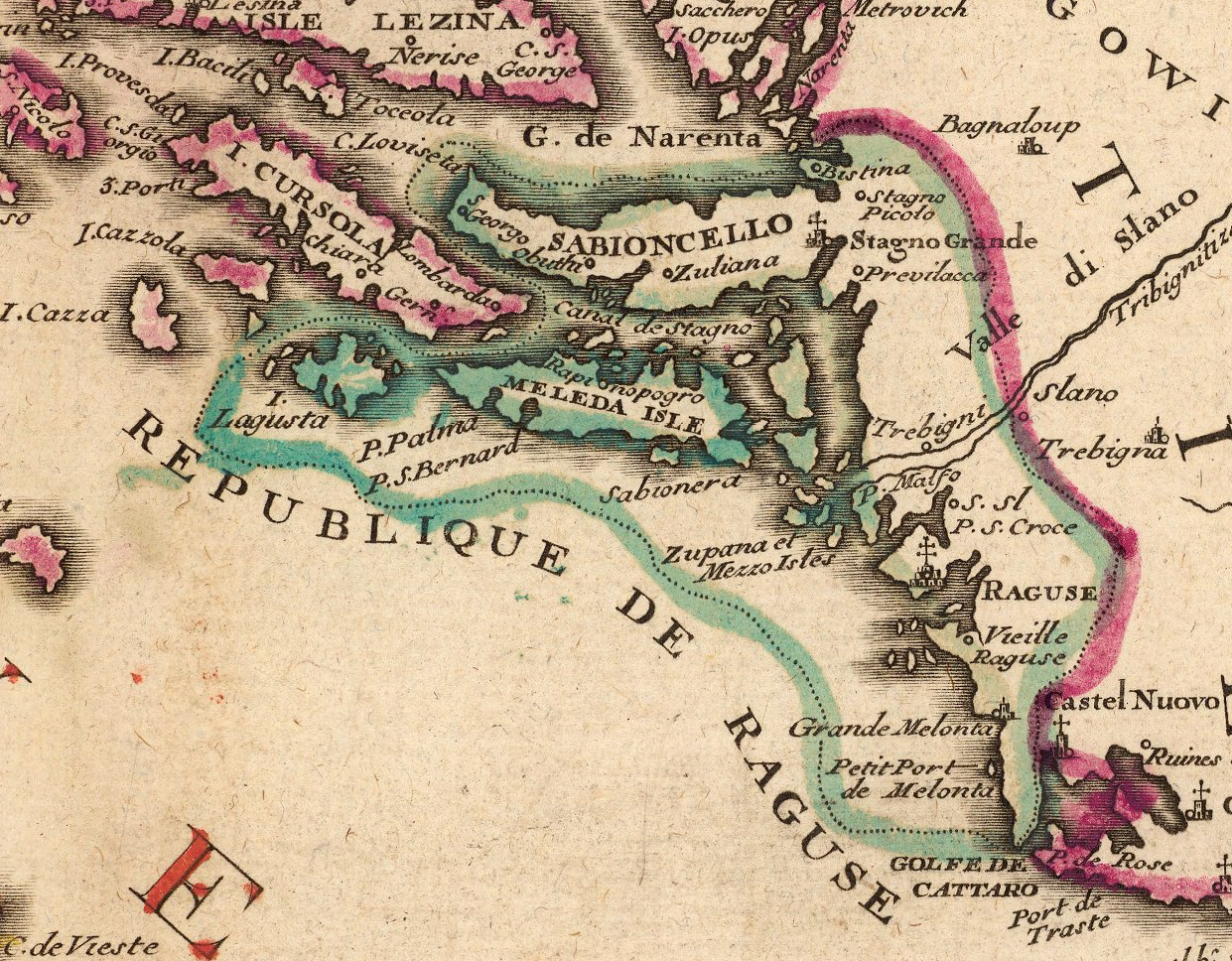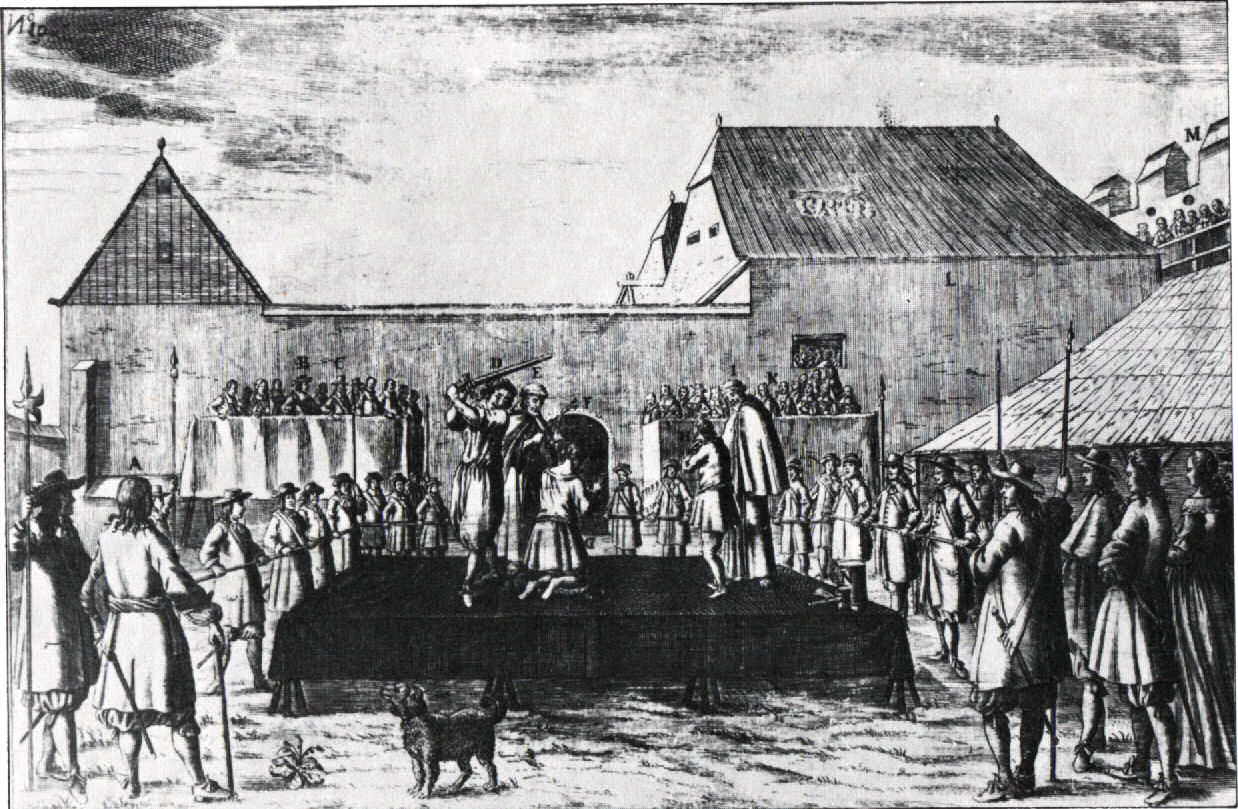|
Vladislav Menčetić
Vladislav Menčetić or Minčetić (~1617 1666) was a Croatian poet and politician from the Republic of Ragusa. He was schooled in Dubrovnik, and later served as a military commander in Konavle on multiple occasions from 1656 to 1658. In 1637, he saw the zenith of his political career when he entered the Great Council of the Republic of Ragusa. Since 1639, he also served as a lawyer. Writing during the baroque period, he was a part of the Ragusan nobility which opposed the idea of the Ottoman Empire having supremacy over Dubrovnik. By the end of the Candian war, he assessed such political bond could be severed. This was also reflected in his writing, such as his work ''Trublja slovinska'' (The Trumpet of the Slavs), published in Ancona in 1665. The work was dedicated to the Ban of Croatia, Petar Zrinski, whom he highly elevated in his poetic vision, even to the point of ascribing the future liberation of Constantinople Constantinople (#Names of Constantinople, see other names ... [...More Info...] [...Related Items...] OR: [Wikipedia] [Google] [Baidu] |
Croatian Literature
Croatian literature refers to literary works attributed to the medieval and modern culture of the Croats, Croatia, and Croatian language, Croatian. Besides the modern language whose shape and orthography were standardized in the late 19th century, it also covers the oldest works produced within the modern borders of Croatia, written in Church Slavonic and Medieval Latin, as well as vernacular works written in Čakavian dialect, Čakavian and Kajkavian dialects. History Croatian medieval literature Croatian medieval prose is similar to other European medieval literature of the time. The oldest testaments to Croatian literacy are dated to the 11th and 12th centuries, and Croatian medieval literature lasted until the middle of the 16th century. Some elements of medieval forms can be found even in 18th-century Croatian literature, meaning their influence was stronger in Croatia than in the rest of Europe. Early Croatian literature was inscribed on stone tablets, hand-written on man ... [...More Info...] [...Related Items...] OR: [Wikipedia] [Google] [Baidu] |
Republic Of Ragusa
The Republic of Ragusa, or the Republic of Dubrovnik, was an maritime republics, aristocratic maritime republic centered on the city of Dubrovnik (''Ragusa'' in Italian and Latin; ''Raguxa'' in Venetian) in South Dalmatia (today in southernmost Croatia) that carried that name from 1358 until 1808. It reached its commercial peak in the 15th and the 16th centuries, before being conquered by Napoleon's First French Empire, French Empire and formally annexed by the Kingdom of Italy (Napoleonic), Napoleonic Kingdom of Italy in 1808. It had a population of about 30,000 people, of whom 5,000 lived within the city walls. Its motto was "'", a Latin phrase which can be translated as "Liberty is not well sold for all the gold". Names Originally named ' (Latin for "Ragusan municipality" or "community"), in the 14th century it was renamed ' (Latin for ''Ragusan Republic''), first mentioned in 1385. It was nevertheless a Republic under its previous name, although its Rector was appointed b ... [...More Info...] [...Related Items...] OR: [Wikipedia] [Google] [Baidu] |
Konavle
Konavle () is a municipality and a small Dalmatian subregion located southeast of Dubrovnik, Croatia. The region is administratively part of the Dubrovnik-Neretva County and the center of the municipality is Cavtat. Demographics The total municipality population was 8,577 people in 2011, split in the following 32 settlements: * Brotnice, population 31 * Cavtat, population 2,153 * Čilipi, population 933 * Drvenik, population 52 * Duba Konavoska, population 63 * Dubravka, population 295 * Dunave, population 155 * Đurinići, population 96 * Gabrili, population 210 * Gruda, population 741 * Jasenice, population 14 * Komaji, population 275 * Kuna Konavoska, population 17 * Lovorno, population 183 * Ljuta, population 194 * Mihanići, population 96 * Mikulići, population 88 * Močići, population 447 * Molunat, population 212 * Palje Brdo, population 130 * Pločice, population 83 * Poljice, population 70 * Popovići, population 236 * Pridvorje, population 23 ... [...More Info...] [...Related Items...] OR: [Wikipedia] [Google] [Baidu] |
Baroque
The Baroque ( , , ) is a Western Style (visual arts), style of Baroque architecture, architecture, Baroque music, music, Baroque dance, dance, Baroque painting, painting, Baroque sculpture, sculpture, poetry, and other arts that flourished from the early 17th century until the 1750s. It followed Renaissance art and Mannerism and preceded the Rococo (in the past often referred to as "late Baroque") and Neoclassicism, Neoclassical styles. It was encouraged by the Catholic Church as a means to counter the simplicity and austerity of Protestant architecture, art, and music, though Lutheran art#Baroque period, Lutheran Baroque art developed in parts of Europe as well. The Baroque style used contrast, movement, exuberant detail, deep color, grandeur, and surprise to achieve a sense of awe. The style began at the start of the 17th century in Rome, then spread rapidly to the rest of Italy, France, Spain, and Portugal, then to Austria, southern Germany, Poland and Russia. By the 1730s, i ... [...More Info...] [...Related Items...] OR: [Wikipedia] [Google] [Baidu] |
Ottoman Empire
The Ottoman Empire (), also called the Turkish Empire, was an empire, imperial realm that controlled much of Southeast Europe, West Asia, and North Africa from the 14th to early 20th centuries; it also controlled parts of southeastern Central Europe, between the early 16th and early 18th centuries. The empire emerged from a Anatolian beyliks, ''beylik'', or principality, founded in northwestern Anatolia in by the Turkoman (ethnonym), Turkoman tribal leader Osman I. His successors Ottoman wars in Europe, conquered much of Anatolia and expanded into the Balkans by the mid-14th century, transforming their petty kingdom into a transcontinental empire. The Ottomans ended the Byzantine Empire with the Fall of Constantinople, conquest of Constantinople in 1453 by Mehmed II. With its capital at History of Istanbul#Ottoman Empire, Constantinople (modern-day Istanbul) and control over a significant portion of the Mediterranean Basin, the Ottoman Empire was at the centre of interacti ... [...More Info...] [...Related Items...] OR: [Wikipedia] [Google] [Baidu] |
Ancona
Ancona (, also ; ) is a city and a seaport in the Marche region of central Italy, with a population of around 101,997 . Ancona is the capital of the province of Ancona, homonymous province and of the region. The city is located northeast of Rome, on the Adriatic Sea, between the slopes of the two extremities of the promontory of Monte Conero, Monte Astagno and Monte Guasco. The hilly nature around Ancona is a strong contrast to the flatter coastline in areas further north. Ancona is one of the main ports on the Adriatic Sea, especially for passenger traffic, and is the main economic and demographic centre of the region. History Greek colony Before the Greek colonization, the territory was occupied by separated communities of the Picentes tribes. Ancona took a more urban shape by Greek settlers from Syracuse, Italy, Syracuse in about 387 BC, who gave it its name: ''Ancona'' stems from the Greek word (''Ankṓn''), meaning "elbow"; the harbour to the east of the town was o ... [...More Info...] [...Related Items...] OR: [Wikipedia] [Google] [Baidu] |
Ban Of Croatia
Ban of Croatia () was the title of local rulers or office holders and after 1102, viceroys of Croatia. From the earliest periods of the Croatian state, some provinces were ruled by Ban (title), bans as a ruler's representative (viceroy) and supreme military commander. In the 18th century, Croatian bans eventually became the chief government officials in Croatia. They were at the head of the Ban's Government, effectively the first prime ministers of Croatia. The institution of ban persisted until the first half of the 20th century, when it was officially superseded in function by that of a parliamentary prime minister. Origin of title South Slavic ''ban'' (, with a long ), is directly attested in 10th-century Constantine VII, Constantine Porphyrogenitus' book ''De Administrando Imperio'' as ', in a chapter dedicated to Croats and the organization of their state, describing how their ban "has under his rule Krbava, Lika and Gacka." Bans during the Trpimirović dynasty Refere ... [...More Info...] [...Related Items...] OR: [Wikipedia] [Google] [Baidu] |
Petar Zrinski
Petar IV Zrinski () (6 June 1621 – 30 April 1671) was Ban of Croatia (Viceroy) from 1665 to 1670, general and a writer. A member of the Zrinski noble family, he was noted for his role in the attempted Croatian-Hungarian Magnate conspiracy to overthrow the Habsburgs, which ultimately led to his execution for high treason. Zrinski family Petar Zrinski was born in Vrbovec, a small town near Zagreb, the son of Juraj V Zrinski and Magdalena Széchy. His father Juraj VI and great-grandfather Nikola IV had been viceroys or ''Ban'' of Croatia, which was then a nominal Kingdom in personal union with the Hungarian Kingdom. His brother was the Croatian-Hungarian general and poet Miklós Zrínyi (Nikola VII Zrinski). His family had possessed large estates throughout all of Croatia and had family ties with the second largest Croatian landowners, the Frankopan family. He married Ana Katarina, the half-sister of Fran Krsto Frankopan, and they lived in large castles of Ozalj (in Cen ... [...More Info...] [...Related Items...] OR: [Wikipedia] [Google] [Baidu] |
Constantinople
Constantinople (#Names of Constantinople, see other names) was a historical city located on the Bosporus that served as the capital of the Roman Empire, Roman, Byzantine Empire, Byzantine, Latin Empire, Latin, and Ottoman Empire, Ottoman empires between its consecration in 330 until 1930, when it was renamed to Istanbul. Initially as New Rome, Constantinople was founded in 324 during the reign of Constantine the Great on the site of the existing settlement of Byzantium, and shortly thereafter in 330 became the capital of the Roman Empire. Following the collapse of the Western Roman Empire in the late 5th century, Constantinople remained the capital of the Eastern Roman Empire (also known as the Byzantine Empire; 330–1204 and 1261–1453), the Latin Empire (1204–1261), and the Ottoman Empire (1453–1922). Following the Turkish War of Independence, the Turkish capital then moved to Ankara. Although the city had been known as Istanbul since 1453, it was officially renamed as Is ... [...More Info...] [...Related Items...] OR: [Wikipedia] [Google] [Baidu] |
17th-century Croatian Poets
The 17th century lasted from January 1, 1601 (represented by the Roman numerals MDCI), to December 31, 1700 (MDCC). It falls into the early modern period of Europe and in that continent (whose impact on the world was increasing) was characterized by the Baroque cultural movement, the latter part of the Spanish Golden Age, the Dutch Golden Age, the French ''Grand Siècle'' dominated by Louis XIV, the Scientific Revolution, the world's first public company and megacorporation known as the Dutch East India Company, and according to some historians, the General Crisis. From the mid-17th century, European politics were increasingly dominated by the Kingdom of France of Louis XIV, where royal power was solidified domestically in the civil war of the Fronde. The semi-feudal territorial French nobility was weakened and subjugated to the power of an absolute monarchy through the reinvention of the Palace of Versailles from a hunting lodge to a gilded prison, in which a greatly expanded ro ... [...More Info...] [...Related Items...] OR: [Wikipedia] [Google] [Baidu] |
1610s Births
Year 161 ( CLXI) was a common year starting on Wednesday of the Julian calendar. At the time, it was known as the Year of the Consulship of Caesar and Aurelius (or, less frequently, year 914 ''Ab urbe condita''). The denomination 161 for this year has been used since the early medieval period, when the Anno Domini calendar era became the prevalent method in Europe for naming years. Events By place Roman Empire * March 7 – Emperor Antoninus Pius dies, and is succeeded by Marcus Aurelius, who shares imperial power with Lucius Verus, although Marcus retains the title Pontifex Maximus. * Marcus Aurelius, a Spaniard like Trajan and Hadrian, is a stoical disciple of Epictetus, and an energetic man of action. He pursues the policy of his predecessor and maintains good relations with the Senate. As a legislator, he endeavors to create new principles of morality and humanity, particularly favoring women and slaves. * Aurelius reduces the weight of a goldpiece, the aureus, ... [...More Info...] [...Related Items...] OR: [Wikipedia] [Google] [Baidu] |







